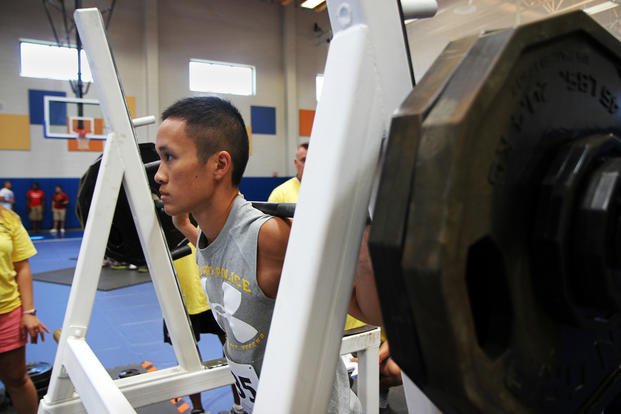Mr. Smith,
I have a few questions regarding my current training and future preparation for a life of military service. I have over a year to train before I enlist, so I would like some advice, please.
-- Jim
1. In my powerlifting program, we do a lot of power cleans, and my coach says it's a great exercise for powerlifters, bodybuilders and athletes. Is there any way to incorporate them into the program I am starting to prepare for Army Special Forces?
I also came from a powerlifting and football-playing background and found that it was near impossible to stay max-rep strong and drop my mile pace. It is fine to lift heavy, but you may want to stop if you are trying to get your mile pace faster or your distance longer. For Army SF training, you need to be a running and rucking machine.
You will not lose your skill or your strength, but it is tough to add endurance and stamina while you are lifting heavy.
2. How do I incorporate grip work, such as farmer walks and power holds?
I like to do grip work on the same days I do pull-ups or rope climbs in my regular workout. But you can add farmer walks and holds as either a grip or full-body core workout supplement.
3. My gym also has a prowler sled; can I use that as well?
If you want to add the prowler [heavy-duty push] sled on leg days, that is fine, but if you are not running and rucking, you are not getting better at running and rucking. You will see weights and prowlers again once you are finished with boot camp, AIT, Airborne, Ranger, etc., but getting to and through these types of training programs requires a different type of athletic skill.
4. I know I need to ruck. How do I get started, and what do you recommend as far as a type of ruck? Is using a weight vest OK?
A weight vest is a fine substitute for a ruck, but half of rucking is getting your ruck perfectly fitted for you. While you are progressing, the weight vest is a great tool. Here are the types of rucks to consider. Learn how to pace yourself at varying speeds.
5. I have a buddy who wrestles in college, and sometimes he uses something called an "elevation mask." He says it helps increase his endurance and so forth. Should I invest in one? If so, how do I implement it?
Elevation masks, also called training masks, cut down on your amount of oxygen by covering the mouth and nose and force the heart and lungs to work harder during training. I do not think they are necessary. Just work out hard. No need for gimmicks.
Since you have more than a year to train, complete your lifting cycle. But soon, you will want to focus on a running, rucking, high-rep calisthenics PT program. Your foundation in powerlifting will carry you far, and you will find that you will not lose your strength, but if you stop running, it's easy to lose gains quickly in cardiovascular endurance.
And when you lift again after your selection training programs, you will see old max-rep lifts back to normal within a four- to six-week cycle.
Good luck.
Stew Smith is a former Navy SEAL and fitness author certified as a Strength and Conditioning Specialist (CSCS) with the National Strength and Conditioning Association. Visit his Fitness eBook store if you're looking to start a workout program to create a healthy lifestyle. Send your fitness questions to stew@stewsmith.com.
Want to Learn More About Military Life?
Whether you're thinking of joining the military, looking for fitness and basic training tips, or keeping up with military life and benefits, Military.com has you covered. Subscribe to Military.com to have military news, updates and resources delivered directly to your inbox.



















